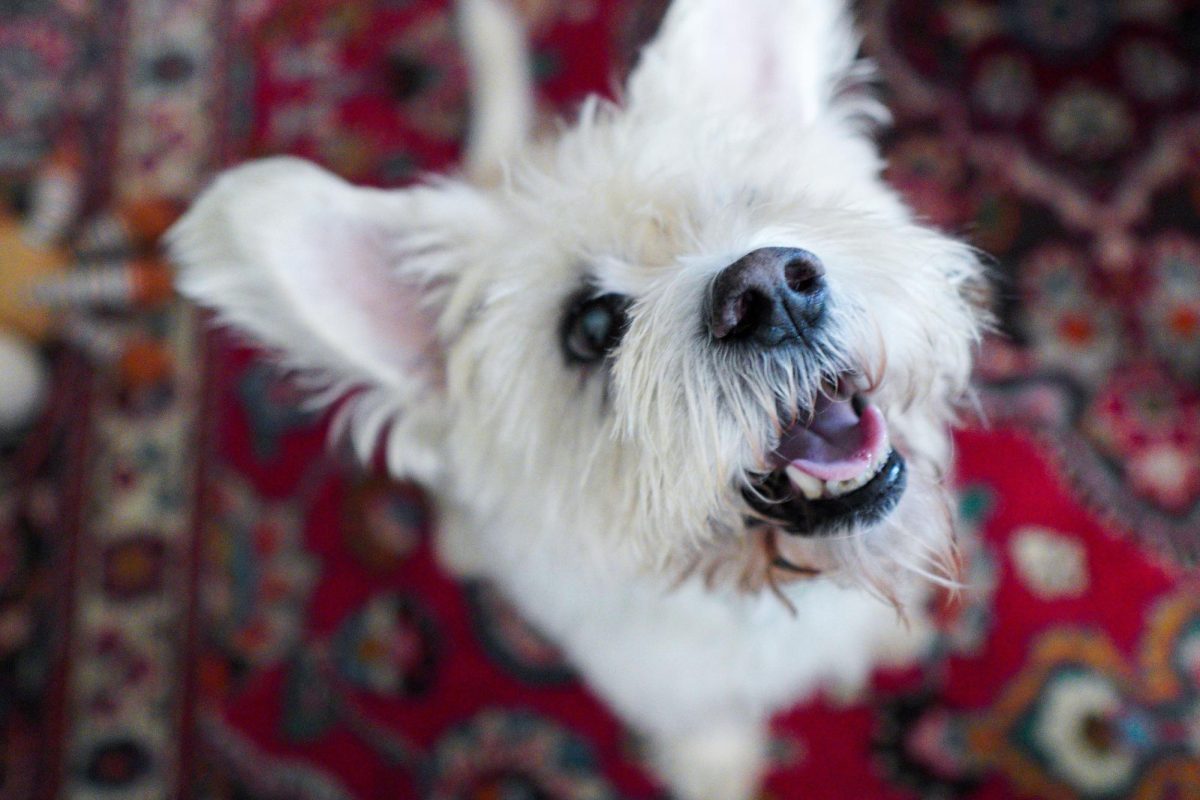A recent study by members of the GW Primate Genomics Lab and researchers at canine cognition labs from across the country linked the complexity of dogs’ facial features to the intensity of their facial expressions.
The researchers found that dogs with plainer facial features — monochromatic faces with little pigmentation and simpler features — displayed more expressive facial behavior to humans than dogs with more colorful and complex facial characteristics. Courtney Sexton, the study’s lead author and a researcher in the lab, said she was surprised that canine facial expressivity changes based on facial complexity because all dogs experience the same selection pressures to evolve to communicate with humans.
Findings in primatology inspired the study, Sexton said. The plain-face hypothesis in primatology argues that facial expressions in nonhuman primates with complex faces are more difficult to read, leading highly expressive primates to evolve simpler faces.
Sexton’s study found that the same hypothesis also applies to dogs.
“What was surprising to me was that they did follow the same trends that we have found in primates, in that the dogs with plainer faces, or solid-colored faces, seemed to appear more behaviorally expressive to people,” Sexton said.
Sexton said it was unclear whether genetic factors, like plainer dogs evolving to be more expressive, or faults in human perception, like expressions being easier to see on plain faces, cause dogs with plainer faces to be more expressive. Sexton said humans may pick up on certain expressions in dogs with simpler faces and not dogs with complex faces because the expressions may be easier to see on faces without “visual noise.”
Sexton said she scored more than 100 male and female dogs selected from a wide range of breeds and phenotypes to measure the complexity of their faces. She said the system, which uses results from a binary survey of “yes” or “no” answers to measure colors and facial features, provides an objective measure of each dog’s facial complexity.
“I developed a binary system to account for markings and colors,” Sexton said. “I was not looking at features like ear shape, or size, or snout length, or size, or even hair length, or many of those other kinds of features that of course, are going to influence how signals are received. We were looking strictly at markings and pigmentation.”
Sexton said she ran an association of this physical score against the dogs’ expressivity, using the Dog Facial Action Coding System, which scores dogs’ facial movements based on the number of muscles they move to produce an objective behavioral sum. The higher the sum, the more muscles moved, which researchers used to signify that a dog had greater objective expressivity.
Sexton said owners of dogs with more complex faces were less likely to accurately notice and understand their dog’s facial expressions.
Sexton said older dogs were also less likely to be expressive, while working dogs or dogs with advanced training were more likely to be expressive. She said older dogs may be less expressive due to physical decline or because older dogs may require less expressiveness to communicate with their long-time owners, and working dogs interact more frequently with humans and may have become more expressive as a result.
Francys Subiaul, a co-author and an associate research professor, said the study will help people understand how many aspects of human culture have been passed on to dogs. Subiaul said dogs are seemingly predisposed to understand human gestures, like pointing, more than other animals because they have evolved alongside humans.
“That is a direct product of this communicated cultural pressure that has affected us because really young infants respond to points in much the same way dogs do, or other primates do not,” Subiaul said. “So in the realm of communication, dogs are really interesting models of this unique cultural force that has been acting on us, and similarly acting on them.”
Experts in canine psychology and animal welfare said plain-faced dogs being more expressive mirrors similar studies for primates, and the study could be the starting point for other research in canine communication.
James Serpell, a professor emeritus of animal welfare at the University of Pennsylvania, said the results seemed to align with the plain face hypothesis in primatology. Serpell said dogs evolved alongside humans to better communicate with humans through facial expressions, meaning that dogs with less complex facial features may need to expend more energy making expressions compared to those with more complex faces to communicate with humans.
Serpell said the study categorized dogs by breed group, like working or sporting, rather than breeds, like golden retriever versus bloodhound, which could have influenced the results because people may inherently perceive certain breeds to be more or less expressive or facially complex based on that breed’s facial features.
“You think of something like a basset hound or a bloodhound with these sort of droopy kinds of faces, and we kind of find those faces cute,” Serpell said. “In a sense, we think it’s kind of cute that these dogs are perpetually sad, but it’s not in any way a true reflection of what’s going on inside the dog’s head.”
Molly Byrne, a fourth-year doctoral candidate in psychology and neuroscience at Boston College who works at the Canine Cognition Center, said Sexton’s study lays the groundwork for dog-to-human communication through facial expressions because the study creates a baseline for what expressive versus nonexpressive dogs are, which future researchers could learn from and use.
“It would be very interesting to sort of be able to subcategorize specific facial expressions to indicate specific feelings or communicative strategies,” Byrne said. “I know that they have done that, at least a little bit in the human system.”
Karen Jesch, a doctoral candidate in psychology and neuroscience at Boston College who also works in the Canine Cognition Center, said she was interested in comparing dogs with their relatives, like dingoes and foxes, in future facial expression studies.
“I know that dogs have this really unique muscle system in their eyebrows that their wild ancestors wolves don’t actually have,” Jesch said. “So somewhere along the route of domestication, they actually evolve this extra muscle to make it so that they can do different facial expressions.”





